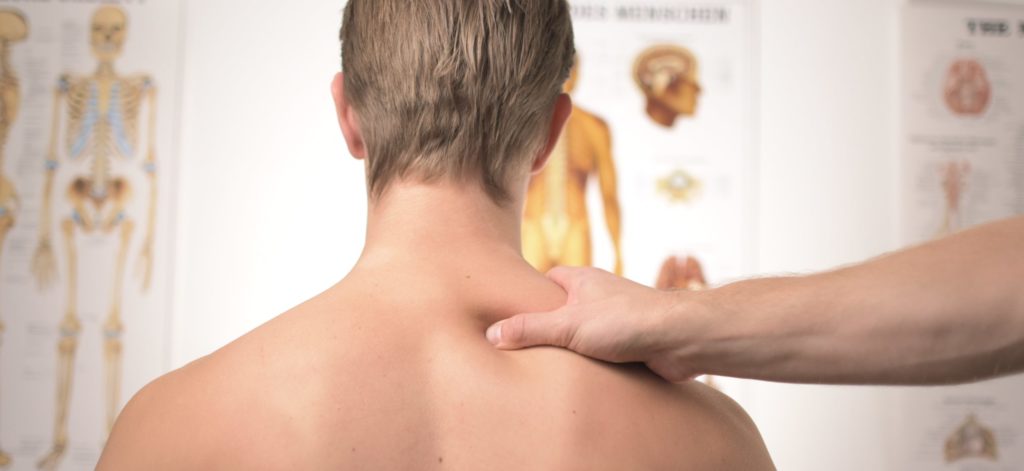
The Pain in Spain Stays Mainly in Your Brain
By Ann Constantino,
Photo by Andrew Neel from Pexels
Suppose your beloved but clumsy dance partner steps on your foot and you immediately feel pain, identified by your brain as clearly being in the crushed appendage, but what exactly is that sensation and where does it occur? Turns out it’s not that easy to pin down the answer to that question and modern science is now showing that pain is a product of the brain and not the offended tissue.
Take for example the famous 1995 case of a construction worker who jumped down off some scaffolding directly onto a nail that went right through his boot, creating a terrifying image of an impaled foot. The man was immediately in agony and was given numerous pain medications on the way to the emergency room where it was assumed that removal of the boot would show a horrible injury. However, after carefully cutting the boot away, it was revealed that the nail had gone right between the worker’s toes, not penetrating any flesh at all.
How we feel pain
Why was the man in so much pain when no tissue damage had occurred? Because pain is in fact a protective mechanism that happens in the brain and not in the affected tissue.
Pain is in fact a protective mechanism that happens in the brain and not in the affected tissue
In many cases, sudden acute pain caused by injury or damage to tissues is nothing more than an appropriate alarm to the central nervous system alerting the sufferer to take some kind of protective action to diminish or end the pain. Get off my foot! For the most part, this type of pain response is easily resolved.
However, when pain becomes chronic or has no source in damage or injury to any physical structures, medical science has struggled to find solutions. Over the past several decades more and more discoveries have been made showing very little correlation between actual tissue damage and the perception of pain.
Most pain-free healthy adults show evidence of degenerative disc disease as early as the age of 30. Yet many sufferers of chronic back pain show no evidence of any disease.
Participants in a pain study were placed in a helmet-like “head stimulator” and were able to watch as the scientist conducting the study turned up the “intensity dial”. They reported an increase in pain as the intensity dial was turned up even though the head stimulators were nothing more than old salon hair dryers doing absolutely nothing to the subjects’ heads.
Pain receptors in the brain are designed to assess threat and danger and then hand over the task of deciding what to do about it to another part of the brain. In cases where pain exists without actual threat or damage to tissue, the system may have become derailed, or as in the case of the construction worker, fooled by the brain’s preconceived notions about stepping on nails.
Pain receptors in the brain are designed to assess threat and danger
This can work in a variety of ways. One scientist tells the story of hiking through the brush and suddenly feeling a scratch on his leg. His brain perceived no threat because he’d walked through scratchy brush his whole life and “knew” there was no threat. It wasn’t until he started to become ill with snakebite symptoms that he realized that scratch from a twig was actually a bite from a venomous snake. So even in cases where the threat is real, the brain may not perceive it as such.
The brain bases its decision not so much on what the tissue’s “nociceptors”, or pain sensors, report, but on past experience, perceived understanding, or habit.
This is not to say that pain is not real. Scientists assure us that pain is real 100% of the time, and trying to find a solution to chronic pain has been at least in part responsible for the opioid crisis throughout the world.
Managing Pain
The prevalence of chronic pain in our society asks even more complex questions about what causes and how to manage pain, as the number of chronic pain patients in the US is greater than cancer, heart disease, and diabetes patients combined.
With the failure of many conventional treatments or the far worse side effects of chemical pain control, new mind-body methodologies are being developed. Some positive results have come from mindfulness-based therapies in which patients may learn to compartmentalize pain, diminishing its intensity if not actually eliminating it.

Education alone about the central nervous system’s way of perceiving pain can be tremendously helpful in a percentage of cases. It helps the patient realize in an abstract way that they are not truly damaged.
Movement has been shown to help retrain a brain stuck in the chronic pain rut by having the sufferer begin with very gentle movement or even just visualization of movement in painful areas. Gradually, often over the course of a year or more, the brain lets go of its habitual expectations and frees the body for pain-free movement.
Gentle movement has been shown to help retrain a brain stuck in the chronic pain rut or even just visualization of movement in painful areas
A therapy called Emotional Awareness and Expression Therapy (EAET) is having positive results through teaching patients that despite their pain being very real, they are not actually physically damaged by it. This enables them to somewhat disassociate from the pain and see it as a habit of the brain which can be unlearned. Then emotion-focused techniques can be applied, digging deep into underlying causes of the old habitual perceptions of fear, threat, and damage, enabling new pain-free neural pathways to form. Often EAET encourages patients to consider past emotional traumas, long term stress, and other possible causes of the source of chronic pain.
Mileage may vary with these new therapies, and considerable commitment is required, of course, with results taking months or longer to be realized. The fact that they represent a paradigm shift in the world of pain treatment makes them difficult to digest for a medical establishment that can be slow to change.
However, if you have struggled to resolve long-term pain issues, or have been getting poor results from conventional treatments, consider looking into some of the mind-body interventions such as EAET, cognitive behavioral therapy, or mindfulness training. Through the brain’s remarkable ability to understand and its plastic capacity to change, you may be able to reduce or eliminate your pain.
Then you will only have to be concerned with finding a more graceful dance partner.
Ann Constantino, submitted on behalf of the SoHum Health’s Outreach department.
Related: Mental Health, SoHum Health, Wellness